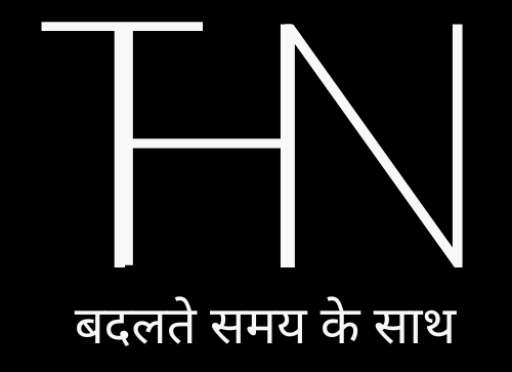Parsi New Year 2023: A Celebration of Renewal and Hope

Parsi New Year, also known as Navroz, is a joyous occasion celebrated by the Parsi community around the world. This year, Parsi New Year falls on Wednesday, August 16. It is a time for families and friends to come together, celebrate the new year, and reflect on the past year.
History of Parsi New Year
Parsi New Year is a Zoroastrian festival that has been celebrated for centuries. It is believed to have originated in Persia, the ancient homeland of the Zoroastrians. The Zoroastrians are one of the oldest monotheistic religions in the world, and they believe in a single God, Ahura Mazda. They also believe in the importance of good thoughts, good words, and good deeds.
Parsi New Year marks the beginning of spring and the renewal of nature. It is a time for new beginnings and fresh starts. Parsis believe that the new year is a time to set new goals, make new resolutions, and let go of the past.
How Parsi New Year is Celebrated
There are many different ways to celebrate Parsi New Year. Some people visit fire temples to pray and offer donations. Others clean their homes and decorate them with flowers and greenery. It is also customary to wear new clothes and give gifts to loved ones.
A traditional Parsi New Year meal is a feast of savory and sweet dishes. Some of the most popular dishes include pulao, biryani, dhansak, and sweets like jalebi and barfi.
Parsi New Year is also a time for community gatherings and festivals. There are often parades, street performances, and musical concerts. It is a time to celebrate the joy of life and the hope for a better future.
Significance of Parsi New Year
Parsi New Year is a significant event in the Zoroastrian calendar. It marks the beginning of the new year on the Shahenshahi calendar, which is based on the solar year. The Shahenshahi calendar is one of the oldest calendars in the world, and it is still used by the Parsi community today.
Parsi New Year is also a time for reflection and introspection. Parsis believe that the new year is a time to look back on the past year and to learn from our mistakes. It is also a time to set new goals and to make new resolutions for the year ahead.
Parsi New Year is a time of great joy and celebration for the Parsi community. It is a time to come together as a community and to renew our commitment to faith, family, and friends. It is also a time to look forward to a new year filled with hope and promise.
Wishes and Greetings for Parsi New Year
Significance of Parsi New Year
Here are some wishes and greetings for Parsi New Year 2023:
- May the new year bring you happiness, health, and prosperity.
- May your home be filled with the warmth of love and laughter.
- May your year be filled with new beginnings and fresh starts.
- May you always have the courage to follow your dreams.
- May you always be surrounded by the love of family and friends.
Questions and Answers
Q: What is the significance of Parsi New Year?
A: Parsi New Year symbolizes renewal, rebirth, and the arrival of spring. It holds cultural and religious importance in the Zoroastrian faith, encouraging reflection, gratitude, and positive intentions for the year ahead.
Q: How do Parsis prepare for Navroz?
A: In preparation for Navroz, Parsis thoroughly clean and decorate their homes, representing the removal of negativity. They often set up a Haft-Seen table with symbolic items, wear new clothes, and engage in communal activities.
Q: What is a Haft-Seen table in the context of Navroz?
A: A Haft-Seen table is a central part of Navroz celebrations. It’s adorned with seven symbolic items, typically beginning with the Persian letter “S,” representing aspects of life and renewal, such as wheat, candles, painted eggs, and a mirror.
Q: How do Parsis celebrate Navroz with food?
A: Navroz celebrations include traditional Parsi dishes like sweet semolina pudding (Ravo) and flavorful foods. Sharing festive meals with family and friends is a way to celebrate the occasion.
Q: Are there any religious aspects to Parsi New Year celebrations?
A: Yes, Parsi New Year holds religious significance for Zoroastrians. People attend ceremonies at fire temples (agiaries), where prayers, rituals, and seeking blessings for the New Year take place.
Q: How do Parsis interact with their community during Navroz?
A: Navroz fosters community connections. People exchange greetings, gifts, and good wishes, attend public events, and participate in cultural programs that showcase Parsi heritage.
Q: What is the spiritual significance of visiting a well during Navroz?
A: Visiting a well or water source during Navroz is a traditional custom where people make wishes, offer prayers, and express hopes for the New Year. It’s a symbolic act of seeking blessings and renewal.
Q: How does Parsi New Year contribute to cultural identity?
A: Parsi New Year reinforces cultural identity through traditions like Haft-Seen tables, traditional attire, and festive foods. It brings Parsis together, preserving and celebrating their unique heritage.
Q: In summary, what does Parsi New Year encompass?
A: Parsi New Year, or Navroz, is a time of renewal and cultural celebration for the Parsi community. It involves cleaning homes, setting up symbolic Haft-Seen tables, wearing new clothes, sharing festive meals, attending religious ceremonies, and fostering community connections.
